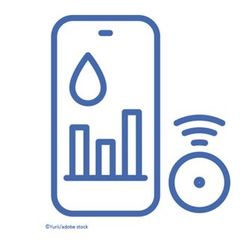© 2025 MJH Life Sciences™ , Patient Care Online – Primary Care News and Clinical Resources. All rights reserved.
Three GLP-1 Receptor Agonists Show Comparable Cardiorenal Protection in Large US Cohort with T2D
GLP-1 RAs liraglutide, semaglutide, and dulaglutide showed similar kidney and cardiovascular outcomes more than 20,000 US veterans with type 2 diabetes.
In a national cohort of nearly 22,000 US veterans with type 2 diabetes (T2D), the glucagon-like peptide-1 (GLP-1) receptor agonists liraglutide, semaglutide, and dulaglutide demonstrated similar effectiveness for protective renal and cardiovascular outcomes.1
The study, published in JAMA Network Open, found no significant differences in risks of kidney failure, major adverse cardiovascular events (MACE), or the composite of cardiovascular-kidney-metabolic (CKM) outcomes among initiators of the 3 incretin mimetics. Mortality rates were largely equivalent, though liraglutide was associated with lower all-cause mortality than dulaglutide in some analyses.1
More Research Needed on CKM Outcomes in T2D
Cardiovascular disease is the leading cause of mortality among the nearly 3 million US adults with T2D,2 and between 30% and 40% will develop chronic kidney disease (CKD).3 The overlapping pathophysiology among T2D, CVD, and CKD is increasingly understood as a distinct disease entity, now referred to as cardiovascular-kidney-metabolic (CKM) syndrome,4 and the topic of clinical treatment guidelines and a target of expanded research. Semaglutide, liraglutide, and dulaglutide are all approved by the FDA to prevent CVD events in adults with T2D, study authors wrote, but while all have shown benefit on early markers of kidney disease, evidence for the class is scant on more advanced renal outcomes. "Furthermore, to our knowledge, no head-to-head trial has directly compared effects of individual GLP-1RAs on clinical events," they added, leading to the current active-comparator new-user study.1
For the research, researchers tapped Department of Veterans Affairs (VA), Medicare, and US Renal Data System data to emulate a head-to-head target trial. Eligible participants were GLP-1RA–naive veterans with T2D treated with metformin who initiated liraglutide, semaglutide, or dulaglutide between 2018 and 2021. The final cohort included 21,790 participants (mean age, 63.5 years; 91% men), with roughly half starting semaglutide and the remainder evenly split between liraglutide and dulaglutide. Follow-up continued through March 2023.1
Investigators applied inverse probability of treatment weighting to balance 56 baseline variables, including demographics, laboratory measures, and comorbidities. Outcomes included kidney failure (estimated glomerular filtration rate [eGFR] less than 15 mL/min/1.73 m² or initiation of kidney replacement therapy), the CKM composite (kidney failure or MACE), MACE alone, all-cause mortality, and selected gastrointestinal (GI) adverse events.1
Comparative Effectiveness
Across a median 3-year follow-up, rates of kidney failure, CKM events, and MACE were statistically indistinguishable among the 3 drugs.
- Liraglutide vs semaglutide: Kidney failure hazard ratio (HR) 0.93 (95% CI, 0.60–1.44); CKM composite HR 0.96 (95% CI, 0.84–1.10); MACE HR 0.95 (95% CI, 0.83–1.09).
- Liraglutide vs dulaglutide: CKM composite HR 0.91 (95% CI, 0.78–1.06).
- Dulaglutide vs semaglutide: No meaningful differences across endpoints.
Liraglutide initiators had a modest survival advantage compared with dulaglutide in both intention-to-treat (HR 0.69; 95% CI, 0.58–0.83) and per-protocol (HR 0.50; 95% CI, 0.31–0.82) models. A lower hazard of death vs semaglutide in the primary model (HR 0.83; 95% CI, 0.69–0.99) did not persist after accounting for adherence.1
Safety, Adverse Events
GI adverse events were infrequent and largely comparable among treatment groups, the authors reported. The only statistically significant differences were reduced risks of gallstones (HR 0.72; 95% CI, 0.54–0.95) and acute cholecystitis (HR 0.62; 95% CI, 0.39–0.99) with dulaglutide compared with semaglutide. The average 24-month weight loss was similar for liraglutide (−9.7 lb) and dulaglutide (−9.8 lb), but greater with semaglutide (−12.2 lb; P <.001 vs both).1
All three GLP-1 receptor agonists appeared similarly effective in this real-world population. The findings suggest that once-weekly dulaglutide or semaglutide and daily liraglutide may be used interchangeably for cardiovascular and kidney protection when access, cost, or tolerability dictate a switch, the authors suggested. However, the modest mortality advantage observed for liraglutide versus dulaglutide warrants further evaluation.1
Different MOAs, Similar Outcomes
GLP-1RAs lower cardiometabolic risk through anti-inflammatory, antifibrotic, and endothelial-stabilizing mechanisms, in addition to improving glycemia and weight.5 Despite differences in pharmacokinetic profiles, semaglutide having the highest receptor affinity and dulaglutide the longest half-life,5 the authors questioned whether "these differences result in clinically relevant effects."
Among the study's limitations the authors acknowledge the potential for unmeasured confounding, short follow-up relative to chronic disease trajectories, and limited generalizability given the predominantly older male cohort. The study also captured an era of shifting GLP-1RA use patterns and intermittent drug shortages, which could influence prescribing and adherence, authors noted.1
Among veterans with type 2 diabetes treated with metformin, liraglutide, semaglutide, and dulaglutide produced comparable kidney and cardiovascular outcomes and low rates of adverse events. While liraglutide showed a potential mortality benefit versus dulaglutide, no major differences emerged otherwise. "These findings support the need for a future head-to-head randomized clinical trial comparing liraglutide vs semaglutide, particularly given that the GLP-1RAs will lose patent exclusivity and become more widely accessible," they concluded.1
References
Derrington CG, Sarwal A, Wei G, et al. Liraglutide vs semaglutide vs dulaglutide in veterans with type 2 diabetes. JAMA Netw Open. 2025;8(10):e2537297. doi:10.1001/jamanetworkopen.2025.37297
Low Wang CC, Hess CN, Hiatt WR, Goldfine AB. Clinical Update: cardiovascular disease in diabetes mellitus: atherosclerotic cardiovascular disease and heart failure in type 2 diabetes mellitus—mechanisms, management, and clinical considerations. Circulation. 2016;133(24):2459-2502. doi:10.1161/CIRCULATIONAHA.116.022194
United States Renal Data System. 2024 USRDS annual data report: epidemiology of kidney disease in the United States. Accessed October 15, 2025. https://www.usrds.org/annual-data-report/current-adr/
Ndumele CE, Rangaswami J, Chow SL, et al; American Heart Association. Cardiovascular-kidney-metabolic health: a presidential advisory from the American Heart Association. Circulation. 2023;148(20):1606-1635. doi:10.1161/CIR.0000000000001184
Nauck MA, Meier JJ. Management of endocrine disease: are all GLP-1 agonists equal in the treatment of type 2 diabetes? Eur J Endocrinol. 2019;181(6):R211-R234. doi:10.1530/EJE-19-0566



